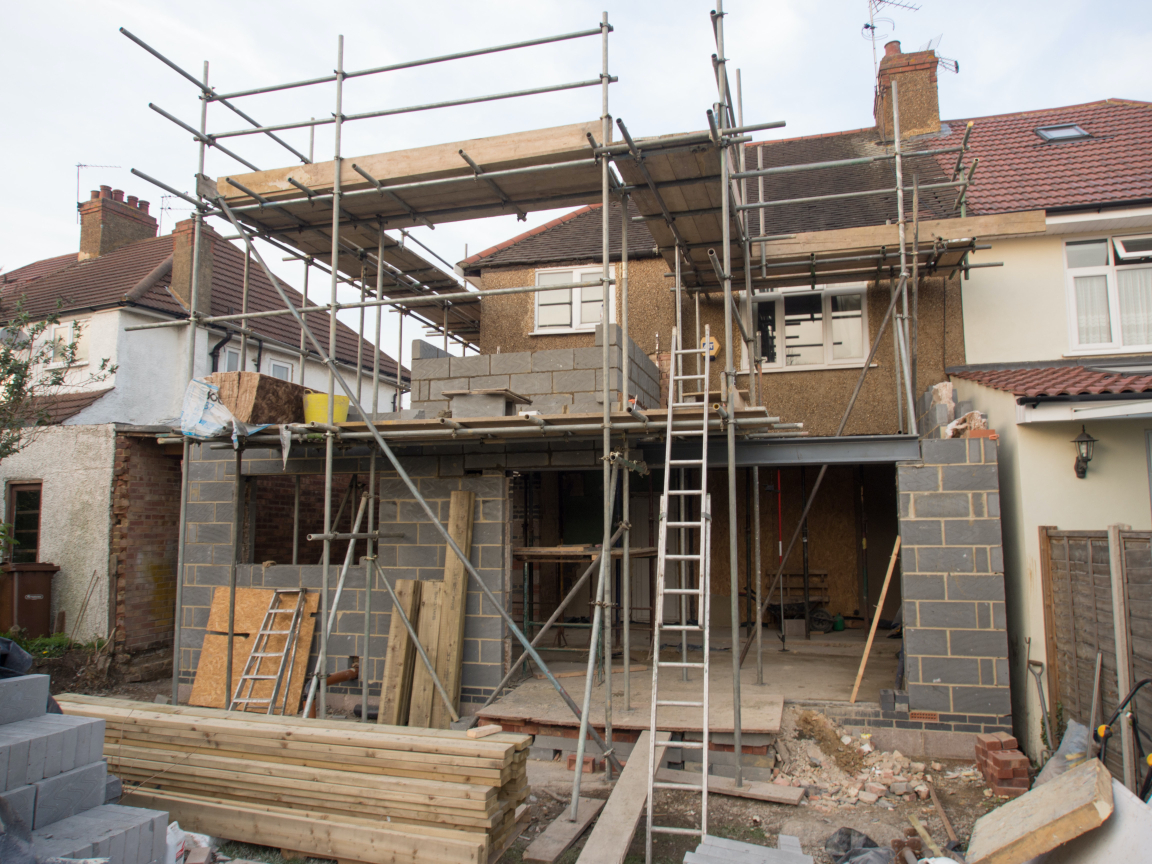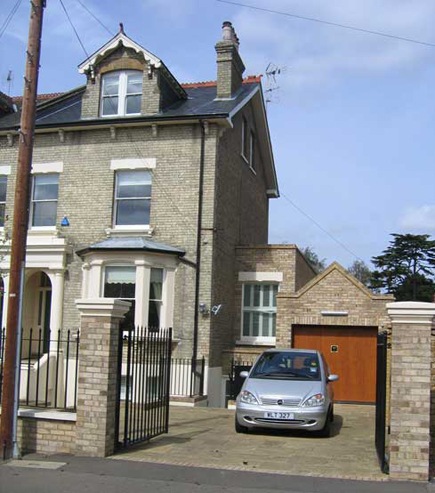What is retrospective planning permission? We look at the rules of retrospective planning permission and when you may need it.
Bob Trimble is a chartered architect registered with RIBA with 30 years experience in the industry. Trimble Architects work throughout Hounslow, Twickenham, Richmond, Kingston Upon Thames, Teddington and the surrounding areas of London.
What is Retrospective Planning Permission?
Retrospective planning permission is the approval a property owner may seek after their unauthorised development has been built entirely. Planning regulations in the system allow landlords to retrospectively request planning permission once the works on the unauthorised building they designed have been carried out.
All aspects, even finished ones, must be considered and accepted by Local Planning Authorities. Generally, it is the responsibility of the landlord or property owner to apply for this approval to alter the original state.
In some cases, an enforcement officer may invite you to complete and submit an application for retrospective planning during their inspection of your new building property.
Your property will be assessed within the boundaries of its own planning merits, much like other planning applications that councils and authorities receive.
Approval or refusal doesn't depend on whether your application was submitted before or after you carried out the work. Whilst most authorities will encourage you to do so beforehand, professionals will view your unauthorised structure with the same criteria regardless.
What can you do without planning permission?
Suppose you've already undertaken several or a few building works, and you are entirely unsure of whether or not you needed to seek out planning permission before beginning.
Don't fret; there are various things you can do to start that do not involve seeking immediate planning permission. You can take on numerous projects that you don't need permission to start; these projects are recognised as 'permitted development rights.'
You rarely need permission to remodel the entire interior design of your home; this is as long as you don't intend to expand the building's structural integrity or footprint.
If you discover that your building isn't graded or listed, or there aren't any current conditions attached to the property, replacing any old doors and windows is fine.
It is also permitted that you may convert any attached buildings; for example, you may turn your garage into a living room or spare room instead of somewhere to keep your car.
It can be a tad more complicated for extensions, orangeries and conservatories. There are some instances where you may not require specific permission from councils or authorities; however, you must ensure these building plans fall within strict requirements according to their size.
The planning rules and complications can also apply to two-storey extensions and porches.

Are the rules different for houses and flats?
For those who desire to make some changes to their maisonette or flat, you must be aware that these buildings do not fall into permitted development rights, meaning you must seek consent before making significant unauthorised changes to the structure of your property.
Typically flats require approval from the freeholder, as they are also of leasehold. If you wish to convert your household into multiple apartments or a block of flats, this will also require permission.

The head of the Churchill Home Insurance company, Pritpal Powar, states, "Homeowners are increasingly opting to extend their existing homes to adequately accommodate growing family sizes, rather than moving into a new home.
However, before they begin any development, we highly encourage that they check whether they require planning permission. If they do, they must wait until it has been entirely granted before starting work."
Making alterations to your household without gaining any form of permission from a local planning authority will significantly affect your insurance within specific time limits. It can often invalidate and obstruct your insurance if you ever need to make a claim.
Even when permission has been granted, this is something you must warn your insurer about before making monetary claims; forgetting to do so can also invalidate your policy further.
Homes with significant alterations and no planning control or permission can be difficult to resell later on, as no one would want to invest in a property that may cause legal issues down the line; ultimately, doing so without planning permission can cause you to lose a lot of money.
Suppose you are unsure and cannot find any information about whether your build needs approval. In that case, you must contact professional planning consultants, a local authority or the local council to double-check.
They will appropriately decipher if your desires require it or if there has been a planning breach. Buildings without this approval are not filed on the land registry records, meaning there is no explicit confirmation of your build, which goes heavily against planning law.
Why do Landlords Receive Planning Enforcement Notices?
Most people that have a building project in mind or drawn up are usually incredibly eager and excited to begin the building process. However, before you initially get going, you'll want to get the bureaucracy and planning permission out of the way to ensure your build is legally allowed to be on your chosen site.
When all design plans are completed, and you've organised a high-quality building team that you can trust with your drawings and comply with all building safety regulations on-site, you need to wait for planning permission.
Waiting for granting planning permission can be a massive dampener, especially since local authorities may not give you consent for at least eight weeks until they've adequately assessed each aspect of your build plans.
You may be so eager to get ahead that you can understand why some builders jump the gun and begin without it. However, it would be best to strive to prevent this at all costs so that you never receive enforcement notices that encourage you to demolish your progress or push you to apply for retrospective approval or planning permission.

You can apply for planning permission many times, with the second time free; however, only eight retrospective applications can be submitted to the planning portal. The reason is you have already breached the law by beginning your project in the first place, so your chances of getting permission can be slightly limited.
In most cases, some property owners can rush ahead and begin a building or extension project on their household without checking the regulations thoroughly. Perhaps they spoke to a family member who completed a form of extension that did not require any building permission and immediately took this as confirmation that their project wouldn't need any either. However, the rules are different for all home improvements and design plans.
These are some of the most popular reasons people need to apply for planning permission; however, you should never assume that this approval form is a finished, done deal.

Depending on the level of experience or knowledge of the planning system that property owners may have, the uncertainties of consent and the work involved may leave you concerned about the overall outcome. We thoroughly understand how challenging the process can be, but it is worth it.
Your building is not doomed to be indefinitely demolished if you receive an enforcement notice; many authorities across the UK and England can assist you with appeal services and retrospective application services. These provide you with the chance to save your project and keep it standing in your chosen location. These individuals will do everything in their power to achieve planning permission for you.
You'll have the time to stop any local planning enforcement action, but we advise that you take immediate action in doing so. Apply for planning permission as soon as you receive the notice; it will allow you and your architect to fight your case.
If your retrospective application fails or you have failed to complete one, it will often result in court action or drastic legal penalties. Not only will your building be forced to be taken down, but you could also face jail.
Can Retrospective Planning Application Get Refused?
Suppose your retrospective planning application is refused; this can be quite a big problem in your plans. Your local council may force you to revert all proposed changes you have made to your property or land plot back to the previous state, incurring all expenses.
For those that spent time applying for retrospective planning permission and have been denied, this means the council or local authorities are aware of your unauthorised building projects, and this knowledge will plummet them into action.
However, before you begin to panic, we must assess the numbers once more. In approximately 88% of cases, local councils often grant retrospective planning consent to those with potential projects. 88% is a relatively high agreement rate, so there's a higher chance of your build being accepted by the local government.
It's best to ensure that you receive sound advice on how to design and build your project, as this will help elevate your plans, making them adhere better to the rules and regulations of retrospective planning. You want to ensure that before applying for planning permission of any kind, it's best to assess each design plan or architectural drawing against the criteria to provide a higher chance of success.
There are numerous well-known examples of an individual failing to obtain planning permission, and the task has gone entirely wrong.
One of the most significant was a case in Surrey at Honeycrock Farm. In 2001, the farm owner decided to build a mock Tudor castle without any planning permission from local authorities.
They hid the building for approximately four years behind strategic hay bales to disguise it out of sight. The owner believed that if their building stood for around four years, it would legally stay standing. However, hiding the development did not work, and he was forced to take down the castle he had built.

A building regulation law states that if a building has been completed, stood, and used throughout a full four years, it can become lawful and, therefore, it is allowed to remain standing.
The farmer's castle was not allowed to remain standing, even after force years, because he had kept the building hidden throughout that time. Until he had removed hay bales, the project was not considered finished, meaning that the four-year rule became void in this case. In 2016, there was a High Court injunction, and the building was demolished.
A failure to comply with the enforcement notices from the courts and local authorities could mean that occupants face jail. Many detrimental consequences come with a lack of compliance with the planning permission system, so we encourage you to seek planning permission regardless of how big or small your project is once your design plans are completed.
Planning Permission Advice Near Me
If you are looking for architectural services throughout Hounslow, Twickenham and the greater London area, then get in contact with our team today. We can offer advice and begin guiding you towards making the right decision.
Bob Trimble is a chartered architect registered with RIBA. Bob Trimble has 30 years of experience working with residential and commercial property projects. For 4 years, Bob Trimble has worked from his housing association and private architectural practice for clients throughout Hounslow, Twickenham, Richmond, Kingston Upon Thames, Teddington and the surrounding areas of London.


